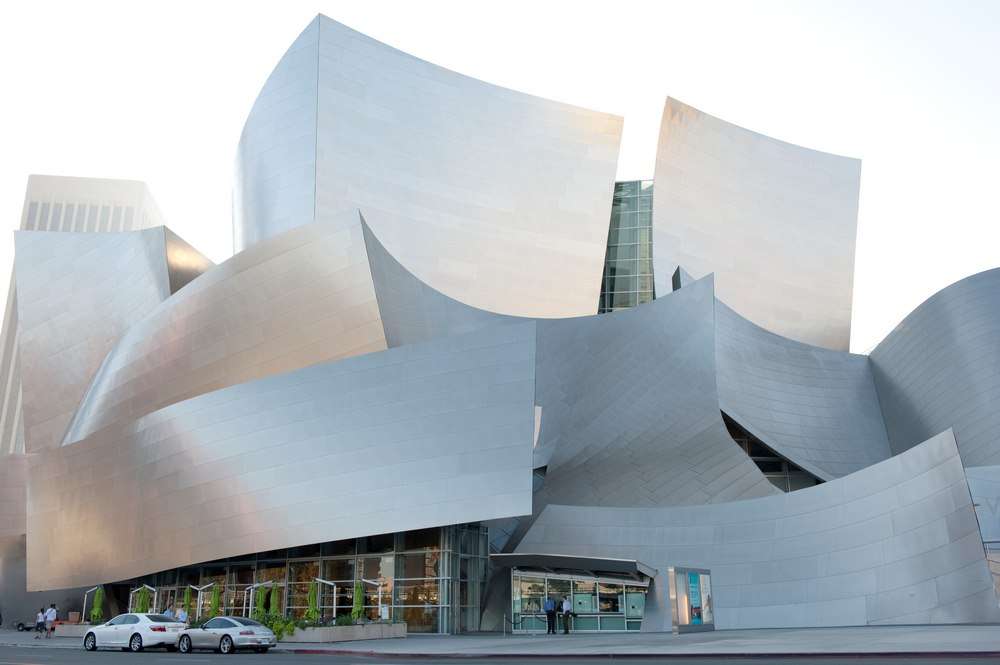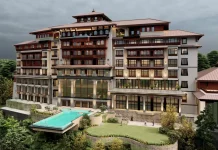Top 10 California Architectural Icons & Landmarks that you have to see!
Golden Gate Bridge, San Francisco
More than a mile long but in reality, almost larger than life, San Francisco’s Golden Gate Bridge is not only a universally recognized symbol for the City by the Bay, but for the US as well. Named one of the “Wonders of the Modern World” by the American Society of Civil Engineers, the bridge was opened in 1937 after four years of construction.

Initially the bridge was opposed by powerful special interests such as Southern Pacific Railroad, which feared for its ferry business. Eventually, local pressure and some ambitious engineers and architects including Joseph Strauss, Leon Moisseiff and Irving Morrow (who is responsible for the graceful Art Deco elements that embellish the bridge’s towers), prevailed. Today, an average of more than 100,000 commuters crosses the bridge daily.
Painted Ladies, San Francisco
There are Victorians, and then there are San Francisco’s Painted Ladies. Undoubtedly, you’ve seen these extensively photographed woods and plaster divas in promotional ads, movies and TV shows set in the Bay Area. Located adjacent to Alamo Square Park, they were constructed in classic Victorian style between 1892-1896 by developer Matthew Kavanaugh.

One of the most popular views is from the park itself, where these impeccably restored Victorians with their pitched roofs and showy gables are seen framed with the Financial District’s skyscrapers in the background.
California State Capitol Building, Sacramento
Floods, political opposition and even the nervous breakdown of a principal architect could not stop the eventual completion of California’s capitol building. Finished in 1874 after 14 years of intermittent construction, the California Capitol echoes neo-Classical and Renaissance influences with a design heavily shaped by the US Capitol building.

Designed by architects Reuben Clark and M.F. Butler, California motifs and symbols like the state flower (the golden poppy) and grizzly bear are found throughout the building which underwent a major renovation in 1977. Listed on the National Register of Historic Places, the Capitol’s main feature is its 130-foot high rotunda that divides the wings where the Assembly and the Senate meet. The building also features an East Wing for the Executive branch and a museum where a fascinating collection of historic artifacts is displayed.
Hearst Castle, San Simeon
A National and California Historical Landmark, San Simeon’s Hearst Castle brings new meaning to the word opulence. The grandiose assemblage of a main mansion, separate cottages and other features like manicured gardens, winding walkways and the dazzling Neptune pool combine to create an architectural masterpiece that defies the imagination. Commissioned by publishing tycoon William Randolph Hearst and designed by noted California architect Julia Morgan, construction stretched between 1919 and 1947.

Influenced by Hearst’s travels through Europe, dominant elements include Baroque, Renaissance and Spanish Revival flourishes that weren’t just recreations, but sometimes actual structures like ceilings bought during his trips. Some of the more impressive numbers include 60,645-square feet (the size of the main house); 165 (the number of rooms) and 61 (the number of bathrooms). Hearst’s domain also included a movie theater, airfield and private zoo.
Asilomar, Pacific Grove
Set on 107-acres of beachfront property in photogenic Pacific Grove, Asilomar is yet another California architectural treasure touched by the hand of architect and engineer Julia Morgan. Designed between 1913 and 1928, the retreat center’s main buildings like the Dodge Chapel Auditorium and Visitor’s Lodge are classic examples of the Arts & Crafts movement done with a California perspective utilizing local wood, stone and floods of natural light. Today the facility is managed by California State Parks and is open to individual guests and groups.
Mission Santa Barbara, Santa Barbara
Known as the Queen of the Missions, both the setting and authentically preserved architecture of this important benchmark of California history make the Mission Santa Barbara an architectural icon. Still an active Roman Catholic church operated by the Franciscan order, the mission houses valuable original artwork and religious items dating back to the mission’s founding in 1786. The design itself is classic Mission-era with wide porticos and ornate twin bell towers that served as the influence of later styles such as Spanish Revival. The Huerta, an orchard-garden, is another attraction that dates from the mission’s founding.
Hollyhock House, Hollywood
Frank Lloyd Wright is well-known for multiple structures across the country, but Hollyhock House was the one that brought him to California and was his first project in Los Angeles. Commissioned by petroleum heiress Aline Barnsdall and completed in 1922, her funds and his vision allowed Wright to experiment with stylized concrete, reflecting pools, interior gardens and other elements like angled Mayan Revival style walls that would become his signature. Named for a favorite flower of Barnsdall that is a recurring design motif, Hollyhock House and its surrounding 11 acres were originally conceived as an arts and theater complex and today still fulfills that purpose. Barnsdall Art Park features art workshops, a theater, farmers market and other public events. Tours of the home itself are currently closed for renovation.
Griffith Park Observatory, Hollywood
Commanding an unobstructed view over the entire Los Angeles basin from the Hollywood Hills, the Griffith Observatory not only offers an amazing perspective of present day LA, but a look into its past as well. Built by WPA crews and artisans during the Great Depression, the Observatory opened to great fanfare in 1935, a donation from city benefactor and developer Griffith J. Griffith who also donated land for 3,000-acre Griffith Park and the Greek Theatre. Featuring stylized Art Deco elements from the era, the building’s architects John C. Austin and Frederick Ashley were also able to integrate fine materials such as marble, leather and copper embellishments thanks to low Depression-era prices. Managed by the City of Los Angeles, admission here is free.
Walt Disney Concert Hall, Los Angeles
Since 2003, Los Angeles can lay claim to a world-renowned architectural opus in the form of the Walt Disney Concert Hall. Designed by celebrated Pritzker prize-winning architect Frank Gehry, the LA-based architect’s vision is a symphony of modernist swirls composed of stainless steel.

The striking building is perched atop Bunker Hill and is seen as a symbol of the revitalization that has swept LA’s downtown area the last two decades. Matching the exterior’s vaunted status, the acoustics of the concert venue, designed by Yasuhisa Toyota, have been equally celebrated by musicians and audiences alike because of the Douglas fir and oak interior’s tonal integrity.
Mission Inn, Riverside
A National Historic Landmark as well as a California Historic Landmark, the opulent Mission Inn Hotel & Spa anchors an entire historic district in downtown Riverside. Simultaneously grand and grandiose, the 125-year-old hotel is considered the largest Mission Revival Style building in the country. In reality, the hotel’s original owner, Frank Augustus Miller, incorporated many styles such as Spanish Gothic and Moorish Revival into his life’s passion. Over more than a century, the results have attracted presidents, celebrities and notables drawn to the hotel’s many inviting patios, elegant porticos, towers, minarets and authentic treasures like Tiffany stained glass windows incorporated into the design.






 Raashii Khanna
Raashii Khanna










